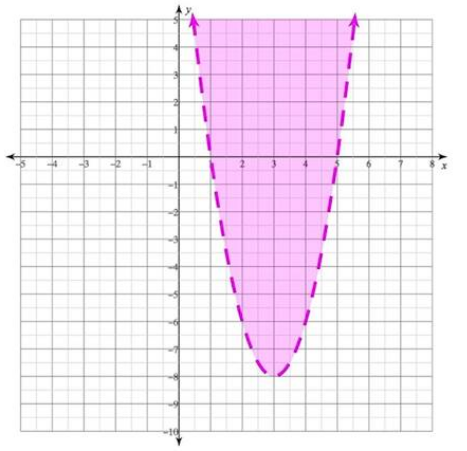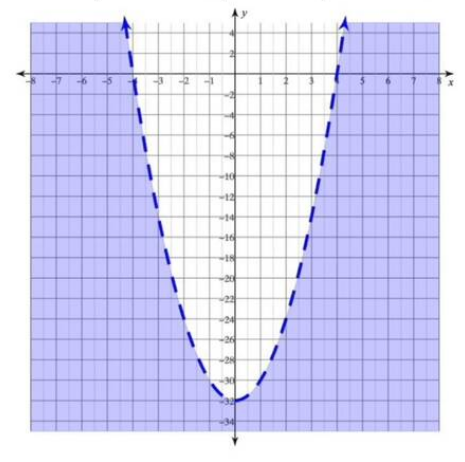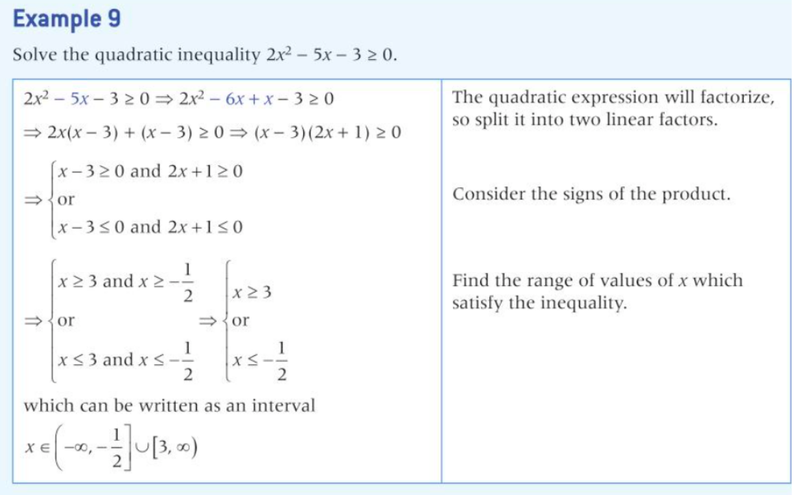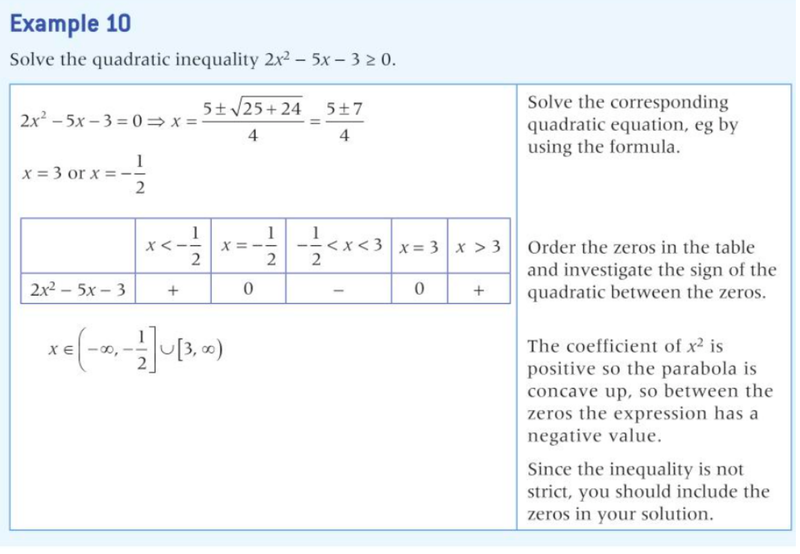What is a Quadratic Inequality?
- A quadratic inequality is similar to a quadratic equation, but it uses one of the inequality signs instead of the equals sign.
- Their graphs look like parabolas, except instead of a line, the graph is the entire area inside or outside the parabola, depending on the sign used.

- If y > ax² + bx + c, then the graph will look like the one above.
- Any point in the area has a greater y value than the one given by the quadratic equation at that x-coordinate.

- If y < ax² + bx + c, then the graph will look like the one above.
- Any point in the area has a smaller y value than the one given by the quadratic equation at that x-coordinate.
Solving Quadratic Inequalities
Algebraic Method
- In order to solve a quadratic inequality that will factorize, you first factorize the quadratic expression into linear factors, and then consider the sign of the product.
- The product of two factors is positive if both are of the same sign, and the product is negative if the factors are of different signs.


Using a Sign Table
- If a quadratic expression will not factorize, then you can split into two linear terms to compare the signs of factors.
- If this is the case, it is best to find any zeros of the quadratic by solving it with the quadratic equation.
- Then you can plot the answers by considering which values would lead to the equation being positive or negative.

- This method will work whether or not the equation will factorize.
Sources
https://study.com/skill/learn/how-to-graph-a-quadratic-inequality-explanation.html